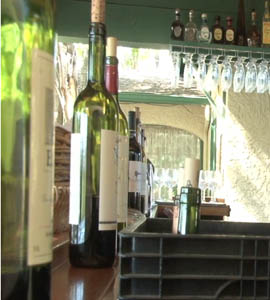Cronkite News has moved to a new home at cronkitenews.azpbs.org. Use this site to search archives from 2011 to May 2015. You can search the new site for current stories.
Binge drinking most common among young, more intense for seniors
PHOENIX – Binge drinking is most common among young people, but a government report on the problem also places a red flag next to senior citizens.
It turns out that those 65 and older who engage in binge drinking do so more frequently than any other age group, according to the Centers for Disease Control and Prevention.
Dafna Kanny, senior scientist with the agency’s Alcohol Program, called the results surprising.
“We didn’t think we had a problem with the elderly, because prevalence was down in that age group,” she said.
The study, released last month, defined binge drinking as a woman consuming four or more drinks and a man consuming five or more drinks within a “short period of time.”
Based on data in the 2010 Behavioral Risk Factor Surveillance System, it found that the average binge drinker consumes excessive amounts of alcohol four times per month. Those 65 and older who binge drink were found to do so an average of five to six times per month.
The true number of times senior citizen binge drinkers consume excessive amounts of alcohol could be even higher than that statistic, according to Kanny, because people metabolize alcohol less effectively with age. That means it takes fewer drinks for the elderly to get drunk.
In Arizona, those age 65 and older are expected to comprise a quarter of the state’s population by the year 2020, according to the state Department of Economic Security.
Lisa Shumaker, office chief for prevention in the Arizona Department of Health Services’ Department of Behavioral Health, said doctors need to be trained to recognize that certain injuries in the elderly, such as falls, may be alcohol-related and to follow up appropriately.
“We have had doctors who are concerned with behavioral health patients who present symptoms, but they don’t have the resources to diagnose what the condition might be,” Shumaker said.
Dr. Dan Blazer, professor of psychiatry at Duke University and the lead researcher of a 2009 study on binge drinking among the middle-aged and elderly, said doctors need to learn to ask the right questions in order to properly diagnose patients.
“It’s amazing how honest people will be when you’re not being judgmental in your asking,” Blazer said. “With something like binge drinking, which often occurs among people who do not drink every day, just a stern warning from a health care provider about the risks can make a big difference.”
He also linked binge drinking among the elderly to underlying problems, such as an individual moving into a retirement community and being eager to make friends.
“What immediately comes to mind is loneliness,” Blazer said. “People who are shy and not adept at social situations almost feel like they have to fortify themselves to go out and meet people, and will use alcohol to do so.”
Kanny, with the CDC, said she believes that binge drinking among the elderly, in general, is a function of having more free time and money at their disposal.
Community-level policies can make a big difference in public opinion, she said, just as previous campaigns against smoking cigarettes and driving without seat belts have done.
“Increasing the price of alcohol so it is not as inexpensive, making those who serve alcohol responsible for harm to those who are already intoxicated or underage, reducing the number of days alcohol is sold, these are community-level policies that could be implemented,” Kanny said.
In the end, Kanny said she hopes the study raises awareness that binge drinking and its associated dangers aren’t solely a young adult problem.
“Binge drinking in general is not recognized as a public health problem,” she said. “This is a phenomenon across the lifespan.”








